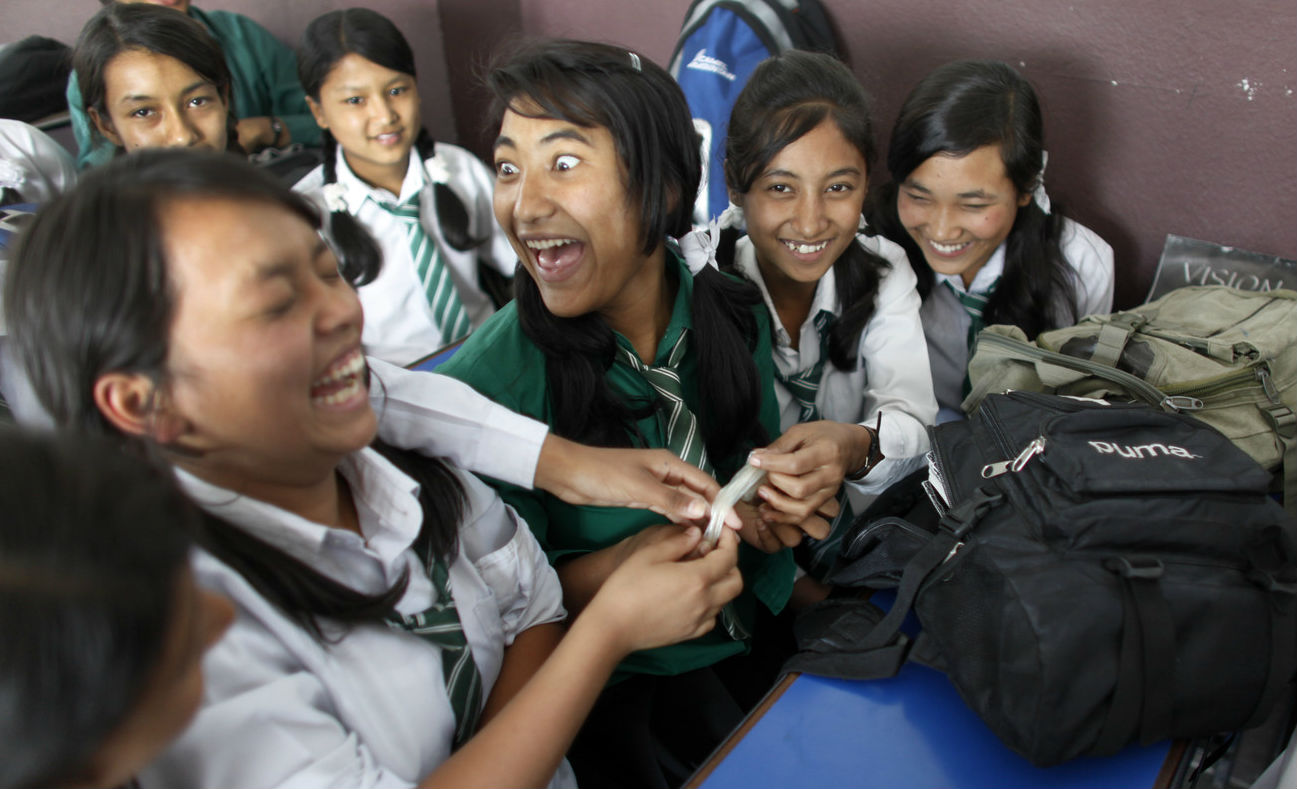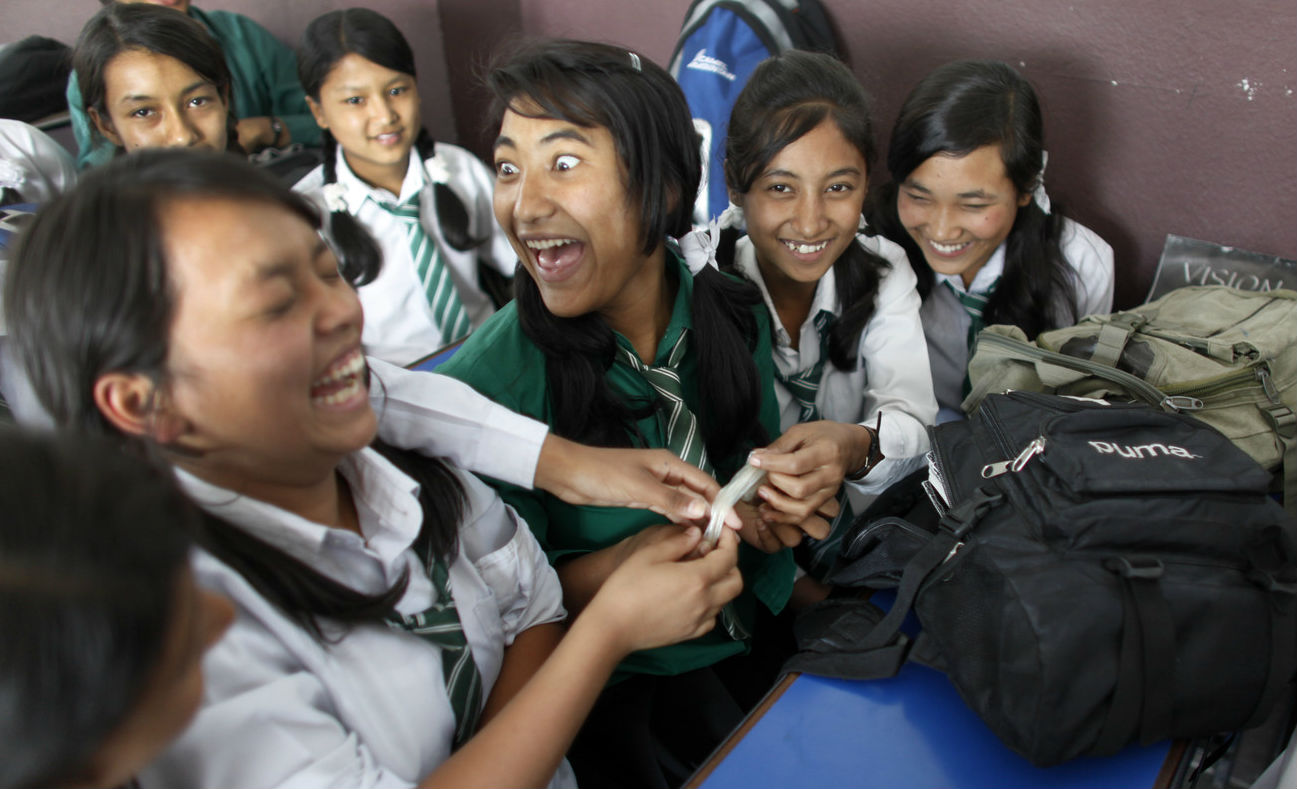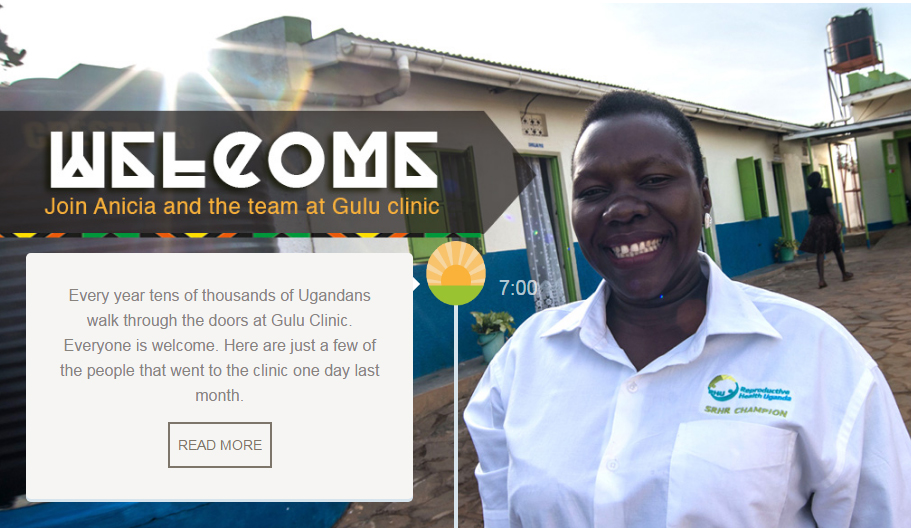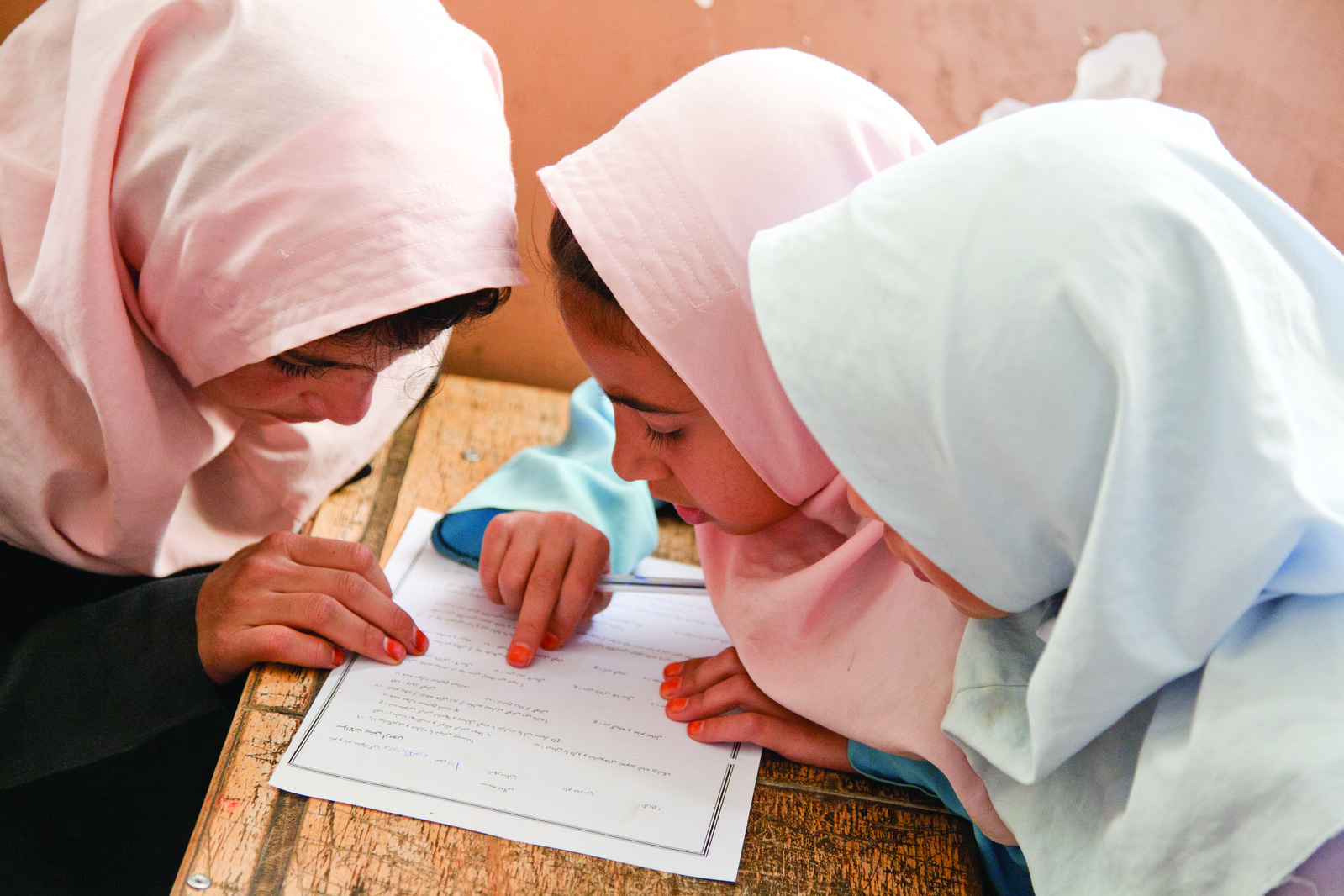
Every young person has to make life-changing decisions about their sexual and reproductive health. However many of them cannot access clear, evidence-based information. IPPF's comprehensive sexuality education programmes enable young people to make informed decisions about their sexuality and health, while building life skills and promoting gender equality.
Articles about Comprehensive Sex Education

Keeping the ‘sex’ in Comprehensive Sexuality Education
Back when I used to deliver sex education workshops in schools, I always made time for anonymous questions at the end of a session. This gave students the chance to write down any questions which weren’t answered in the workshop, and I would try to respond to each one as honestly and accurately as possible. A question I had more than once was some variation on “why do people have sex?” What a great question! And what a difficult question to answer in only a few minutes! There are SO many reasons people have sex – relating to love and intimacy, but also boredom, peer pressure, to earn money or to feel physical pleasure, the list goes on and on! Asking young people themselves to think about the reasons people might have sex (and choose not to have sex) can be a useful way to start discussing important issues like consent and communication, and to engage positively with sexual health and wellbeing. For many of us, sex education was limited to confusing textbook diagrams of ovaries and testes, with the general message that ‘sex’ leads to pregnancy and is generally something to avoid (until you’re married). But this limited picture of sex as a ‘baby-making activity’ doesn’t match up to real life. In fact, most of the sexual acts taking place around the world are not intended to end in pregnancy – first of all, not everybody is having ‘penis in vagina sex’ and many of those who do are using contraceptive methods to try to prevent pregnancy (or would like to, but have an ‘unmet need’). By framing sex only as vaginal intercourse, and by presenting it as something which leads only to unwanted pregnancy and infections, we do young people a disservice. We ignore diversities of pleasure, gender, sexual orientation, and crucially, in an educational environment, we are going to lose young people’s interest and engagement. Young people around the world tell us time and time again that sexuality education is often the one place they can get reliable and accurate information about sex – many do not want to or are not able to speak to parents, and as we know, searching for information about sex online may not always lead to evidence-based and non-stigmatising sources! A recent survey of over 1000 young women in Australia showed that the majority had not learnt anything from their sex education classes that had helped them when dealing with sex and respectful relationships, 90% learnt nothing about LGBT sexuality and relationships and 74% did not learn about pleasure. We clearly still have a way to go to deliver sexuality education which is fit for young people’s needs and realities. Today, IPPF launches two new, exciting publications, one which provides the rationale for ensuring comprehensive sexuality education (CSE) does not neglect positive discussions of sexuality, and the other which provides tips on how to do this in practice. Young people have a right to good quality, relevant education about their sexual and reproductive health and wellbeing. As the World Health Organization makes clear, being ‘sexually healthy’ isn’t just about being free from sexually transmitted infections or other physical dysfunction but also “the possibility of having pleasurable and safe sexual experiences, free of coercion, discrimination and violence”. To truly engage young people with issues such as gender and power, relationships, consent and condom use, we can’t ignore sex and sexuality. The ‘sex-positive’ approach put forward in these two guidance documents does not ignore potentially negative aspects of sex, and the very real problems of sexual violence and potential health risks young people face, but rather opens up an honest discussion about what ‘good’ and ‘bad’ sexual experiences look like. Young people need the confidence and self-efficacy not just to say no to sexual activity they don’t want, but to say yes to sexual activity they do want, when they are ready. We hope that these resources will spark wider conversations about what ‘sex-positive’ CSE looks like in different contexts, and how CSE can help young people to think critically about gendered norms about sexuality and empower them to engage in happy, healthy relationships and to have fulfilling and consensual sexual experiences.
Putting Sexuality back into Comprehensive Sexuality Education: tips for delivering sex-positive workshops for young people
Millions of young people around the world are not getting the kind of education they need and deserve when it comes to understand their sexuality. This document is designed to complement Putting Sexuality back into Comprehensive Sexuality Education: making the case for a rights-based, sex-positive approach, and it aims to give practical tips for putting IPPF's right-based, sex-positive approach, into practice.

Putting Sexuality back into Comprehensive Sexuality Education: making the case for a rights-based, sex-positive approach
IPPF took initiative to develop this discussion paper after advocates and programmes identified a pattern whereby sexuality was becoming marginalised within, or entirely excluded from, CSE programmes and advocacy efforts. We believe that sexuality education programmes are worth investment and implementation because they empower, build self-esteem, competence and confidence and lead to better health and well-being for the individual young people they reach. This publication is complemented by Putting Sexuality back into Comprehensive Sexuality Education: tips for delivering sex-positive workshops for young people.

Gulu clinic: A one stop shop of services in rural Uganda
Uganda has one of the highest fertility rates in the world, and as a result, it also has one of the most youthful populations - more than half of Ugandans are under the age of 15. Approximately, 755,000 unintended pregnancies occur annually out of which 297,000 result in unsafe abortions. We are working hard on the ground to tackle these issues. Our Member takes the approach of offering people as many services as possible to get all health needs met in the same place. See a day in the life of the staff and clients of Gulu clinic, Uganda.
Fulfil! Guidance document for the implementation of young people's sexual rights (IPPF-WAS)
Translating the sexual rights of young people into practice not only involves raising awareness among young people for them to claim their rights, but working with duty bearers, such as health providers, educators and policy makers for them to fulfil these rights in law and in services. As adolescence is a time of gradually gaining responsibilities, implementing the rights of adolescents specifically involves a dynamic process of striking a balance between protecting them while respecting their autonomy and promoting their empowerment. With this in mind, IPPF and the World Association for Sexual Health developed Fufil!. This guide addresses the critical opportunities to implement young people’s sexual rights in a global context and provides specific guidance for policy makers, health providers and educators.

IPPF responds to the launch of UNESCO’s Global Education Monitoring Report
IPPF welcomes UNESCO’s 2016 Global Education Monitoring Report (GEMR) launched today, which sheds stark light on how off track we are in meeting education targets adopted as part of the Sustainable Development Goals (SDGs) only a year ago. Education is a powerful tool to empower girls and is considered a key pathway to future employment and earning. Educated women are more likely to marry later, use family planning and access health care; and to understand their rights and have the self-confidence to act on them.[1] Each additional year of schooling for girls improves their employment prospects, increases future earnings by about 10 per cent and reduces infant mortality by up to 10 per cent.[2] IPPF notes that the GEMR affirms comprehensive sexuality education “as one of the most pressing and universal priorities for the health, well-being and development of young people”. IPPF’s own programmes and research support the central role of CSE in delivering better outcomes for young people [3]; programmes delivered in schools, paired with accessible youth-friendly health services, have been shown to be not only cost-effective, but also cost saving for governments.[4] Evidence shows that education not only plays an important role in preventing negative sexual and reproductive health outcomes, but can also promote gender equality and human rights. There is convincing evidence for governments to invest in CSE that includes a focus on gender, rights and empowerment. Even though there has been progress, with many countries adopting sound policies and scaling up there programming of CSE, implementation is often nowhere near good enough and does not always reach young people who are not in school. As the GEMR shows, measuring progress towards countries’ implementation of CSE is not adequate and initiatives to monitor national implementation of programmes must address the tension between national values and commitment to a global agenda. SDG target 4.7[5] introduces education for global citizenship and sustainable development, explicitly linking education to other Sustainable Development Goals (SDGs), highlighting the transformative aspirations of the new global development agenda. Part of this aspiration must include enabling young people to realize their rights, by challenging and changing social norms, by empowering them, and allowing them to make informed choices about their health. The GEMR launched today sends a loud and clear message to governments around the world. Business as usual will not suffice. In order to respond to the growing education and health gaps that are disproportionately affecting the most marginalized young people across the world, IPPF urges governments to implement high quality sustainable CSE programmes that encompass information and education about sexual and reproductive health, gender, rights and empowerment principles, and that encourage critical thinking in young people. Only then will a transformative development agenda be possible. Read more about IPPF’s position on CSE in our latest policy report: [1] USAID. Op. cit.; United Nations Millennium Project Task Force on Gender Equality (2005) Taking Action: Achieving Gender Equality and Empowering Women. This contributes to their social empowerment and status: Eyben R (2011) Supporting Pathways of Women’s Empowerment: A Brief Guide for International Development Organisations. Pathways Policy Paper. Brighton: Pathways of Women’s Empowerment. [2] World Bank (2002) Opening Doors: Education and the World Bank. Available at Accessed 14 January 2015. [3] IPPF (2016) Everyone’s right to know: delivering comprehensive sexuality education for all young people. [4] UNESCO (2011) Cost and Cost-effectiveness Analysis of School-based Sexuality Education Programmes in Six Countries. Geneva: United Nations Educational, Scientific and Cultural Organization. [5] Target 4.7 states ‘By 2030, ensure that all learners acquire the knowledge and skills needed to promote sustainable development, including, among others, through education for sustainable development and sustainable lifestyles, human rights, gender equality, promotion of a culture of peace and non-violence, global citizenship and appreciation of cultural diversity and of culture’s contribution to sustainable development.’
How to improve young people’s access to safe abortion - Bosnia Herzegovina: Using a buddy system
Young people face unique barriers when seeking accurate information about abortion, and in accessing abortion services. This series showcases strategies implemented by IPPF Member Associations that have successfully reduced these barriers and increased young people’s access to abortion information and services. In this short summary from Bosnia and Herzegovina, they provide a comprehensive strategy on using buddy systems in the context of sexual and reproductive health (SRH) services, which is a process where a nominated volunteer or staff member - the ‘buddy’- supports a client throughout their engagement with the service. The strategy, outlines the key steps needed for successful implementation and highlighting key lessons learned to consider in taking this strategy forward. This guide can be used by programme managers and implementers to help design and inform strategies to ensure that young people are enabled to access the necessary support and services they need in the event of an unwanted pregnancy.
How to improve young people’s access to safe abortion - Cameroon: Partnering with educational institutions
Young people face unique barriers when seeking accurate information about abortion, and in accessing abortion services. This series showcases strategies implemented by IPPF Member Associations that have successfully reduced these barriers and increased young people’s access to abortion information and services. In this short summary from Cameroon, they provide a comprehensive strategy on partnering with educational institutions to provide young people with specifically targeted health education. The strategy, outlines the key steps needed for successful implementation and highlighting key lessons learned to consider in taking this strategy forward. This guide can be used by programme managers and implementers to help design and inform strategies to ensure that young people are enabled to access the necessary support and services they need in the event of an unwanted pregnancy.
How to improve young people’s access to safe abortion - Ghana: Using social media
Young people face unique barriers when seeking accurate information about abortion, and in accessing abortion services. This series showcases strategies implemented by IPPF Member Associations that have successfully reduced these barriers and increased young people’s access to abortion information and services. In this short summary from Ghana, they provide a comprehensive strategy on using Social Media to deliver and exchange information about sexual and reproductive health (SRH), and in particular safe abortion. The strategy, outlines the key steps needed for successful implementation and highlighting key lessons learned to consider in taking this strategy forward. This guide can be used by programme managers and implementers to help design and inform strategies to ensure that young people are enabled to access the necessary support and services they need in the event of an unwanted pregnancy.
How to improve young people’s access to safe abortion - Pakistan: Youth Friendly Spaces
Young people face unique barriers when seeking accurate information about abortion, and in accessing abortion services. This series showcases strategies implemented by IPPF Member Associations that have successfully reduced these barriers and increased young people’s access to abortion information and services. In this short summary from Pakistan, they provide a comprehensive strategy on creating Youth Friendly Spaces, outlining the key steps needed for successful implementation and highlighting key lessons learned to consider in taking this strategy forward. This guide can be used by programme managers and implementers to help design and inform strategies to ensure that young people are enabled to access the necessary support and services they need in the event of an unwanted pregnancy.
Pagination
- Previous page
- Page 10
- Next page






